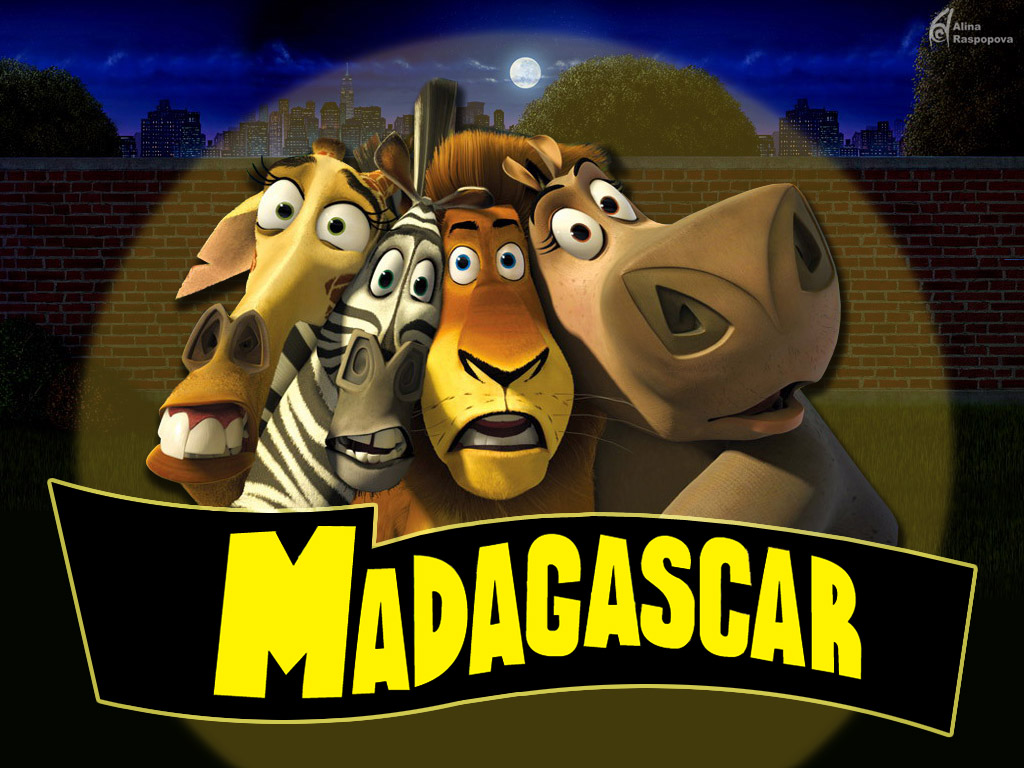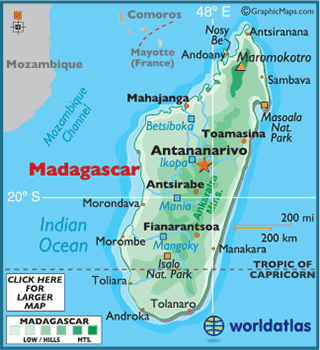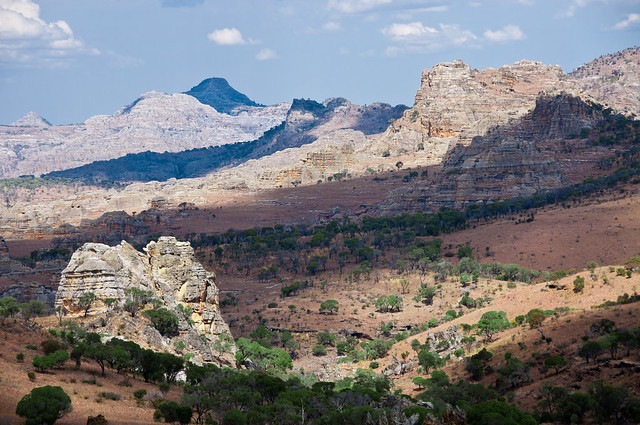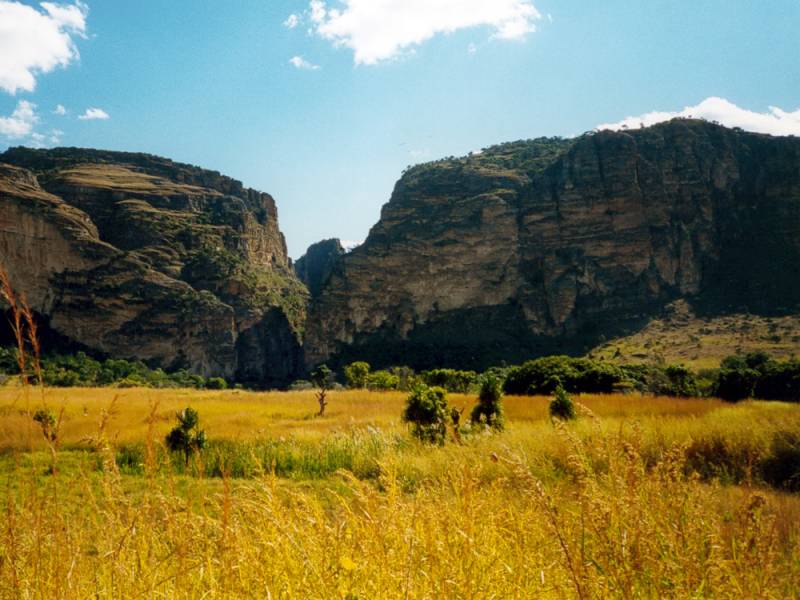Lets's Move On to Madagascar!!

 |
The Republic of Madagascar is an island nation off the
southeast coast of Africa. Its main island is the fourth largest in the world.
In addition to the Malagasy language, French is also spoken
among the educated. English is becoming more widely spoken. Malagasy and French
were the original constitution’s official languages. In the 2007 constitution,
Malagasy is still the national language. English was recognized to improve
foreign investment.
 |
Despite a high potential for tourism, tourism in Madagascar
is underdeveloped. Madagascar's tourist attractions include its beaches and
biodiversity. The island's endemic wildlife and forests are unique tourist
attractions.
The island is one of the world's most biologically
diverse areas, with many endemic species. More than half of the island's
breeding birds are endemic. Other endemic species include the Red-bellied
Lemur, the Indri, and the Aye-aye.
 |
| Aye-aye |
 |
| Red-bellied Lemur |
 |
| The Indri |
It is internationally renowned as a
wildlife tourism and ecotourism destination, focusing on lemurs, birds, and
orchids. The Indri is the largest lemur species. One of the best places
to observe the Indri is the Analamazoatra Reserve (also known as Périnet), four
hours away from the capital. The presence of the Indri has helped to make
the Analamazoatra Reserve one of Madagascar's most popular tourist
attractions. One family group of Indri in the park is habituated to humans
and are thus easy for tourists to observe.
 |
| Isalo National Park |
The Isalo National Park is notable for is varied terrain. Located in the central southern region of Madagascar, the park includes areas of grassland, steep canyons and sandstone formations, all dotted by occasional pools lined by palm trees. As in many of the country’s national parks, guides are required. Tours can be arranged to last as short as several hours or as long as several days.




 |
| Nosy Be
The small island of Nosy Be is one of Madagascar’s premier tourist spots attracting thousands of tourists from across the globe year round. Although Nosy Be’s beaches don’t look as picture perfect as some other tropical beaches, they do win points for tranquility, clear turquoise water and excellent seafood restaurants serving seafood diner on the sand.
|
 |
| Avenue of the Baobabs The Avenue of the Baobabs is a group of trees lining the dirt road between Morondava and Belon’i Tsiribihina in western Madagascar. Its striking landscape draws tourists from around the world, making it one of the most visited locations in the region. The Baobab trees, up to 800 years old, did not originally tower in isolation over the landscape but stood in a dense tropical forest. Over the years, the forests were cleared for agriculture, leaving only the famous baobab trees. |
 |
| Ile Sainte Marie
The
Ile Sainte Marie lies off the east coast of Madagascar. The island’s array of
protected bays and inlets drew pirates to Ile Sainte Marie during the 17th and
18th centuries, and the wrecks of several pirate ships can still be viewed from
the shallow waters of the Baie des Forbans. Today the island is one of the top
tourist attractions in Madagascar. The still, clear waters of the island’s bays
make ideal spots for snorkeling. Migrating humpback whales visit the island
waters during summer and early fall.
I hope for more interesting African wildlife while fall in love deeply with the beautiful sea~~
     |

No comments:
Post a Comment